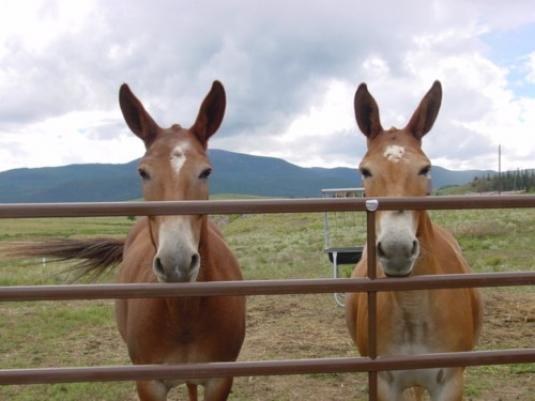What is interspecific hybridization examples
People breed different species of plants and animals to produce organisms with valuable properties. For example, mule – heterotic hybrid of a donkey and a horse and Nar – hybrid one-humped and two – humped camels have great stamina and strength. Hybrids of wild mountain sheep and fine-wool sheep give wool of high quality. However, all interspecific and intergeneric hybrids are usually sterile.
Why are interspecies hybrids are usually sterile
The cause of infertility distant hybrids is the difference of their chromosomes. Each chromosome is represented by only one homologue, resulting in the formation of homologous pairs (bivalents were) in meiosis becomes impossible. I.e. meiotic filter, occurs when distant hybridization, prevents the formation of normal germ cells in females and their sexual reproduction.
Chromosomes of different structure from inter-specific hybrids are not able to konjugierte. In the normal course of meiosis homologous pairs closer together, partially exchanged genes, and then reteplase and on the threads of the spindle disperse to different poles of the dividing cell. At the crossing of distant hybrids of the chromosome that do not have a pair, don't disperse to different poles, and randomly, arbitrarily fall into the forming gamete. These germ cells are usually not viable.
Polyploidy as a method of overcoming the sterility of interspecific hybrids
One of the main methods of overcoming the sterility of interspecific hybrids polyploidy. When using this method, the spindle deliberately destroy special substances (for example, poison colchicine), and the doubled chromosomes are due to remain in the same cell. Homologous chromosomes in multiple sets of the parent birds conjugial between that restores normal course of meiosis.
Polyploid hybrid of cabbage and radish – an example of successful overcoming of the sterility of distant hybrids
For the first time the sterility of distant hybrids overcome by polyploidy Russian geneticist G. D. Karpechenko in 1924, received ogrodowy a hybrid of radish and cabbage. Both contain a haploid set of chromosomes 9. The hybrid has 18 chromosomes (9 from the cabbage and radish 9) sterile, because the chromosomes in meiosis are not conjugium. In polyploid, amphidiploids, hybrid, of which 18 chromosomes of the cabbage and radish, the conjugation of the chromosomes of the cabbage with the cabbage, reechnyj – redenumi. This hybrid resembling a cabbage, and radish, successfully fruiting: pods is represented by two connected pods, one of which is similar in appearance to the cabbage and the other on radecky.
